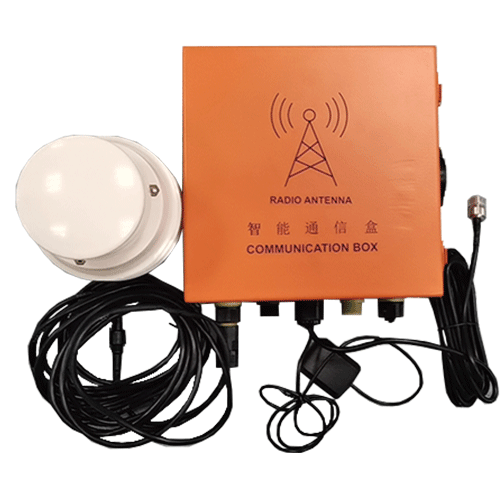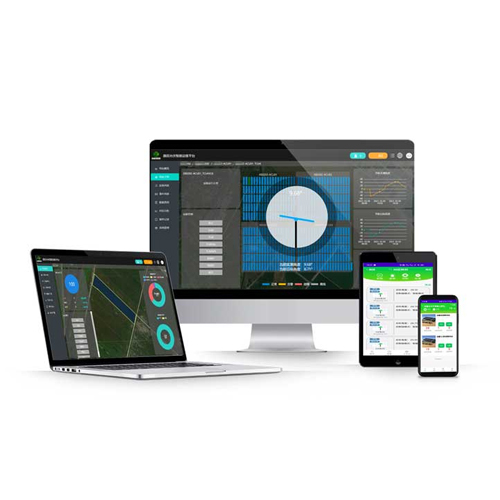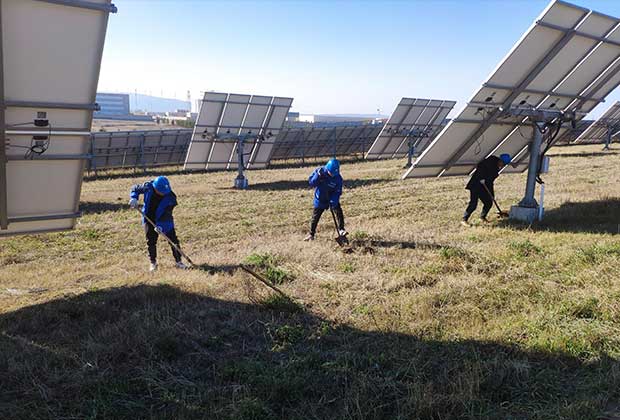What is solar tracker?
A solar tracker, also known as solar tracking system, is a device that keeps solar panels facing the sun at all times, allowing the sunlight to be directed vertically onto the solar panels. This system significantly improves the efficiency of solar photovoltaic modules.
According to the different structures, solar trackers can be divided into two categories: single-axis and dual-axis. The single-axis solar tracker rotates around its own axis and moves back and forth in a single direction, while the dual-axis tracker continuously faces the sun when moving in two different directions.
Among these two types of products, the single-axis solar tracker has a larger market share. In 2019, the revenue of the global single-axis solar tracker market accounted for 78.67%, while the revenue of the dual-axis solar tracker market only accounted for 21.33%.
In terms of application fields, solar trackers are mainly used in public utilities. Data shows that in 2019, the global revenue of solar trackers in the public utility sector reached $2688.61 million, accounting for 92.45% of the market share, while residential and commercial sectors accounted for only 2.22% and 5.33%, respectively.
Analysis of global market development of the solar tracker
Studies have shown that North America is the largest revenue market for solar trackers in the world. In 2019, the revenue of the North American solar tracker market was $811.89 million, accounting for 27.92% of the global market share. The Middle East and Africa market ranks second with a market share of 20.80% and a revenue of $604.97 million. South America is the third largest revenue market, and its revenue of solar trackers in this region was $570.50 million in 2019, accounting for 19.62% of the global market share. The market revenue shares of Europe and Asia-Pacific regions were 18.08% and 13.59%, respectively.
Currently, although the market share of the solar tracker market in Europe is relatively low, its market development prospects are promising. Many countries are committed to developing the photovoltaic industry to help accelerate the achievement of the "double carbon" target. In early January 2019, the Italian Ministry of Economic Development released a new National Integrated Climate and Energy Plan for 2030, with the goal of consuming 30% of renewable energy by 2030 and setting a target of 50GW of installed photovoltaic capacity.
In January 2019, the French Ministry of Ecology released a draft plan for energy development in the next ten years. According to the plan, the installed capacity of renewable energy in France will increase fourfold by the end of 2028. The new installed capacity will mainly come from wind and photovoltaic power generation. According to the plan, by the end of 2028, the installed capacity of renewable energy in France will be four times the current level, with new installed capacity mainly coming from wind power and photovoltaic power generation.
In the early 2000s, the German Federal Parliament and Senate passed the Renewable Energy Act, which has since been revised several times and became an important legal basis for promoting renewable energy in Germany. The law stipulates that by 2020, renewable energy will account for 35% of Germany's electricity supply, 50% by 2030, 65% by 2040, and 80% by 2050.
 English
English  中文
中文



